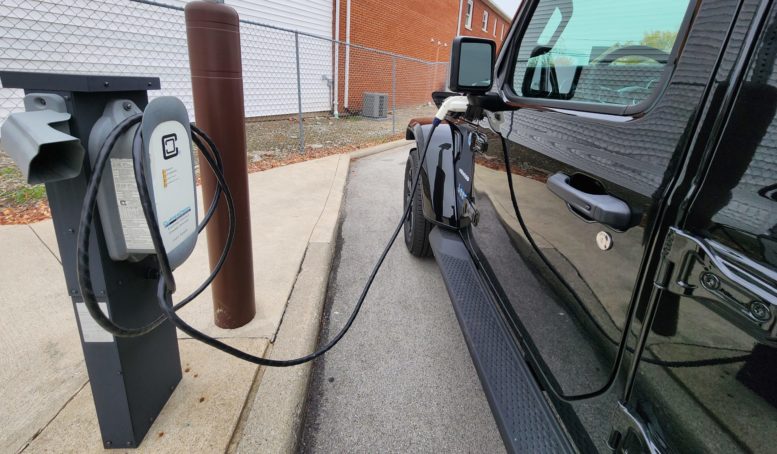Congresswoman Marcy Kaptur, D-Toledo, has announced $14 million has been secured for electric vehicle charging infrastructure for Northwest Ohio – with some of the money coming to Wood County.
The funding comes from the Federal Highway Administration’s Charging and Fueling Infrastructure Discretionary Grant Program. The Lucas County Transportation Improvement District will use this $14 million award to install up to 360 new electric vehicle charging ports throughout Northwest Ohio, specifically in Lucas, Ottawa, Sandusky, and Wood counties.
“Electric vehicle technology and infrastructure is a key part of the future of America’s automotive industry and Northwest Ohio is poised to continue its tradition as a leader of automotive excellence and innovation,” Kaptur said. “This major federal investment will accelerate installation of electric vehicle chargers across our region and support good-paying jobs for the workers who build and maintain them. The Bipartisan Infrastructure Law has brought major investment home and will continue delivering as we grow our economy from the bottom up and middle out. This is an investment in sustainable infrastructure, powering transportation systems that drive our economy forward, and an investment in communities and our people across Northwest Ohio.”
“We are thrilled for Northwest Ohio to receive this substantial federal grant to support the installation of electric vehicle charging stations,” said Sandy Spang, executive director of Toledo Metropolitan Area Council of Governments (TMACOG). “This investment underscores our region’s commitment to sustainability and enhances our transportation infrastructure, making it easier for residents and visitors in our region to embrace cleaner, greener mobility. By expanding access to electric vehicle charging networks, we are fostering economic growth, attracting new businesses, and creating job opportunities, all while contributing to a healthier environment. This project is a vital step forward in building a more connected, forward-thinking community.”
The Charging and Fueling Infrastructure Grant Program provides funding to strategically deploy publicly accessible electric vehicle charging infrastructure and other alternative fueling infrastructure. This grant program has two tracks:
- Community Charging and Alternative Fueling Grants (Community Program): To install electric vehicle charging and alternative fuel in locations on public roads, schools, parks, and in publicly accessible parking facilities.
- Charging and Alternative Fuel Corridor Grants (Corridor Program): To deploy electric vehicle charging and hydrogen/propane/natural gas fueling infrastructure along designated alternative fuel corridors.
Community Program grants will prioritize rural areas as well as low- and moderate-income neighborhoods with low ratios of private parking or high ratios of multi unit dwellings. The Bipartisan Infrastructure Law provides $2.5 billion over five years for this program to strategically deploy electric vehicle charging infrastructure and other alternative fueling infrastructure projects in urban and rural communities in publicly accessible locations, including downtown areas and local neighborhoods, particularly in underserved and disadvantaged communities. Federal cost-sharing is up to 80% with applicants providing the remaining 20%.

